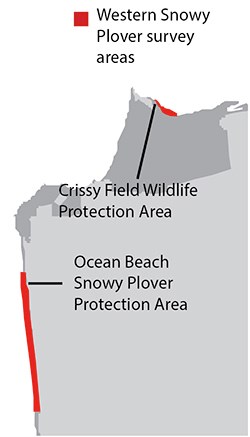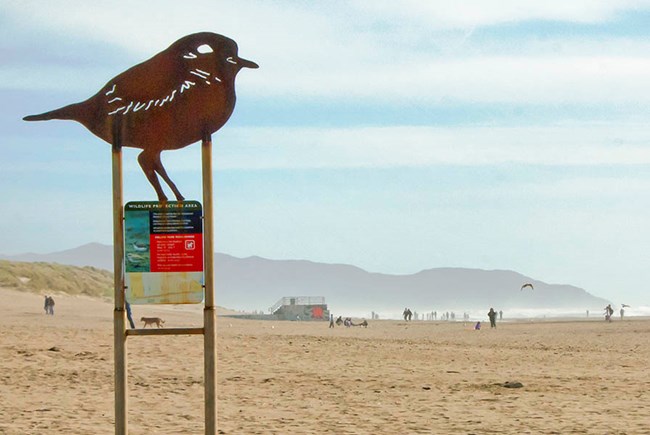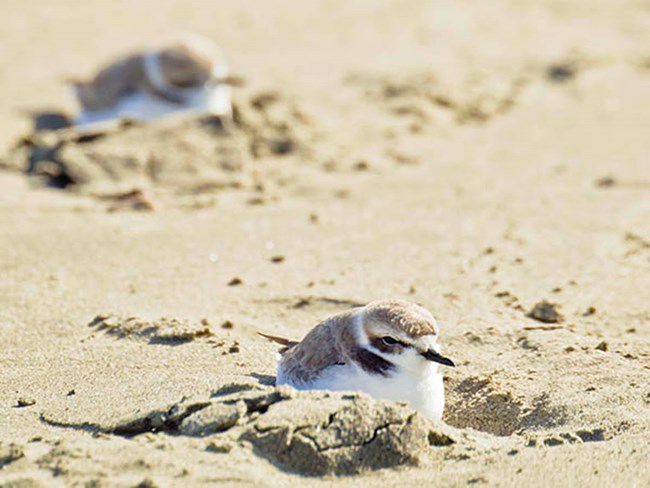Last updated: September 14, 2018
Article
Western Snowy Plover Monitoring at Golden Gate National Recreation Area

NPS / Jessica Weinberg McClosky

Why Are Western Snowy Plovers Important?
Western Snowy Plovers are excellent indicators of the health and diversity of sandy beach ecosystems. They need wide beaches with sparse, low vegetation so they can see approaching predators while they feed on sand fleas and other beach invertebrates. Beaches that are also relatively undisturbed allow the plovers time to rest and save up energy for migration and breeding. Unfortunately, these birds and the sandy habitats they rely on are vulnerable to human recreational activities, coastal development, invasive plants, and artificially inflated predator populations. Plover numbers and nesting locations have declined significantly compared to pre-1970, signaling deterioration in healthy beach ecosystems. The US Fish and Wildlife Service listed Western Snowy Plovers as federally threatened in 1993.
The National Park Service began monitoring overwintering Western Snowy Plovers at Ocean Beach in 1994. In 2004, when the first plovers appeared on the newly restored Crissy Field beach and dunes, biologists began monitoring there as well.
Why Do We Monitor Western Snowy Plovers?
- To detect trends in the population size and distribution of overwintering Western Snowy Plovers in the Golden Gate National Recreation Area
- To understand threats to overwintering Western Snowy Plovers
- To determine when and how to conduct beach maintenance activities

NPS / Jessica Weinberg McClosky
How Do We Use the Monitoring Data?
- To guide and evaluate Western Snowy Plover outreach and recovery efforts
- To inform policy decisions on issues like beach closures and pet restrictions
- To plan strategies for emerging threats such as climate change and sea level rise
What Have We Learned?
The overwintering Western Snowy Plover population on Ocean Beach has generally remained smaller than what it was at the start of the monitoring program. Still, it is far larger than the young population at Crissy Field, which remains tiny but seems to be increasing slightly over time. Monitoring data have identified several potential threats, including patrol vehicles, equestrians, joggers, kite flyers and unleashed dogs. Such disturbances cause plovers to use extra energy in fleeing instead of foraging or resting, ultimately reducing their chances of survival. Monitoring data have also shown that in spite of leash regulations lowering the number of unleased dogs in the monitored areas, they still threaten the Western Snowy Plover.

NPS / Jessica Weinberg McClosky
For More Information
Golden Gate Wildlife Ecologist
Bill Merkle
Links
San Francisco Bay Area Inventory & Monitoring Network
Pacific Coast Science and Learning Center
Summary by Jessica Weinberg McClosky, September 2013.
Download PDF from the NPS Data Store
